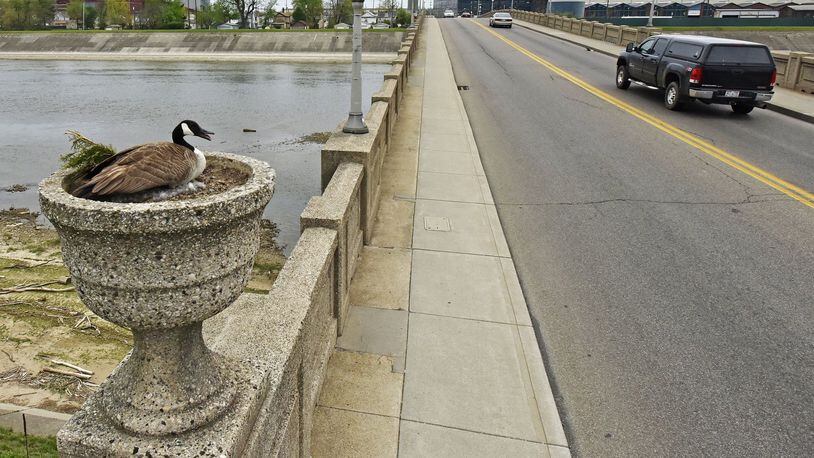City Manager Joshua Smith on Wednesday, in a brief discussion with Hamilton City Council, said that while Hamilton’s city government is committed to conducting a study, it is prudent to wait until perhaps the 2021 budget year while other funding help is sought.
But, he added later in an interview, if funding can arrive in 2020, Hamilton would be happy to launch the study then.
Council members agreed to table the matter until their Sept. 25 meeting. Officials were hurrying to end Wednesday’s meeting to attend a ceremony commemorating the Sept. 11, 2001 terrorist attacks.
At the Aug. 28 council meeting, most of the five council members who were present indicated to Smith that they were in favor of conducting the study, which would propose routes for the highway and bridges that would be needed to span the Great Miami River and railroad tracks.
The study also would include a “project-initiation package,” the draft purpose and needs statement, the project concept and feasibility study, among other things.
Many city residents, and even members of council, have expressed hopes that the proposed North Hamilton Crossing can help reduce congestion on High and Main streets, which they fear will increase when the proposed gigantic indoor sports complex and convention center, Spooky Nook at Champion Mill, opens in 2021.
Officials in previous months had said it would probably take 10 years for that highway to be built, but Smith on Aug. 28 predicted it could take 20 years or longer because of the high costs, would officials guessed could be in the range of $150 million to $200 million.
Smith said he doesn’t believe the $144 million Spooky Nook complex will significantly increase rush-hour traffic, even though it is expected to attract 10,000 or more athletes and their families on some weekends.
Smith believes the congestion won’t be significantly increased because vehicles arriving at Spooky Nook’s existing facility near Lancaster, Pa., do so after rush hour on Fridays and leave on Sunday afternoon.
Smith told council he emphasized in an earlier conversation with David Spinney, executive director or the Butler County Transportation Improvement District, that council is committed to the project.
Smith said he is confident after speaking with others that Hamilton can receive funding help for the study. Hamilton’s portion is to be matched by $250,000 that the TID has, which was left over from the South Hamilton Crossing project, an overpass that allowed Grand Boulevard to cross over CSX railroad tracks, linking Ohio 4 with the area of Miami University’s Hamilton campus.
About the Author
